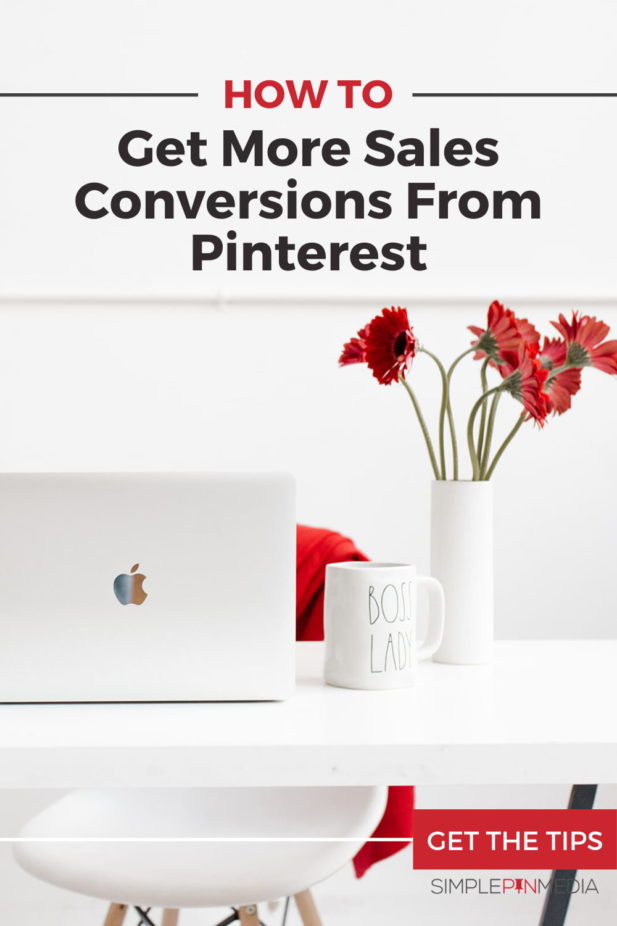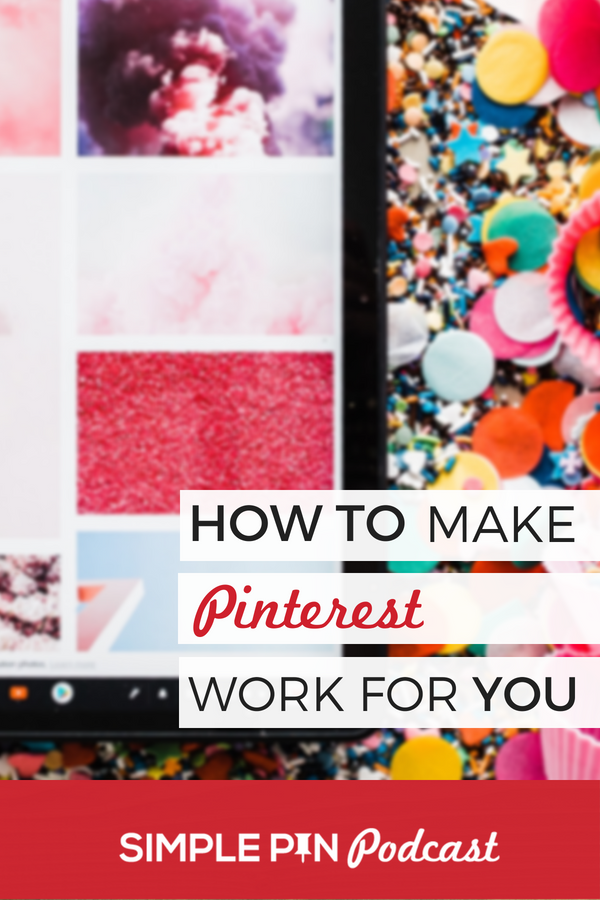Are you struggling to convert your Pinterest traffic to sales? The whole point of Pinterest marketing is to find your person, lead them to your website, where you offer products that directly address their pain point.
In today’s episode, we’re talking all about your Pinterest conversion rate — that’s basically how effective you are at finding and converting your person on Pinterest. This will help you drill down to also find your Pinterest conversion rate.
I’m going to be helping my friend, Natalie Gingrich, take her Pinterest traffic and convert them into people who want to sign up for her certification program.
Natalie is a longtime friend and I wanted to take this opportunity to help her figure out how to convert her Pinterest users. Why? Because 30% of her traffic is coming from Pinterest and she’s struggling with how to convert that to sales.
This post contains affiliate links, which means if you make a purchase through these links, I may receive a small commission at no extra cost to you. Click here to read my full disclosure policy.
Your Pinterest Conversion Rate
Natalie is an operations leader and mentor for helping people that have a skillset in project management. She takes effective project managers and helps them to build a business in remote and online spaces by utilizing their skills in project management.
Natalie’s ideal person has the ability to be an effective project manager. They might have those skills from education or from experience. They don’t have to have a background in the corporate world to come into her certification program.
Having experience in operations can look like HR, project management, finances, engineers, medical professionals, etc. Any person who has worked in a profession where processes and systems are incredibly important.
Natalie is looking for leaders and strategic partners. Leadership means being willing to say “yes, maybe” instead of “yes, ma’am” to everything.
It’s important for Natalie that her applicants get exactly what she has promised, especially since they are spending money on the program.
The Content Investment
Natalie has been consistently blogging for three years and has been releasing podcast episodes for one year. She started using Pinterest about 2.5 years ago. Every one of her blog posts has 1-5 pins created for it.
Natalie’s top ten performing pins are team-related. Her most popular pin is about “Onboarding New Team Members,” but these posts are older and her branding has changed since then.
Her “Director of Operations” board is what she wants people to be clicking on but that term might not be as easily found as “Online Business Manager” or “Service Provider.”
The first thing Natalie can test out is pairing down the text on her pins. You need to create an interest in the user in order to create a desire in them to click.
The person on Pinterest doesn’t want to read a ton of text on an image. You need to capture them as quickly as possible. One thing you can do is take the questions you are being asked and put that text directly on your pin images.
Two Different Types of Pinterest Users
There are two different types of users on Pinterest:
- One is looking through their feed and mindlessly scrolling.
- The other is actively searching for something specific.
By creating two different types of images for the two different types of users, you can capture both of them.
You don’t have to have your podcast episode numbers on your Pinterest images, but it is crucial that you just have your branding on every image. Make sure it is visible and tasteful. It can be anywhere on the image except in the bottom right corner because that is where the visual search tool is.
Any time you have a guest on your podcast, pull the biggest takeaway from the episode and use that on the Pinterest image. That will draw your user onto your site because they will know what they’re getting. You do not need to use the guest’s names on the pin image.
How to create ‘fresh’ images for Pinterest.
Analytics and Opt-Ins
Natalie is looking to find out what pin image drew her person in, how long they were on her site, and when they decided to buy into her program. The best way to do this is by using UTM codes.
These codes allow you to know exactly what images are performing the best and which are not.
In your Google analytics, under Overview, you can see what type of device people are using to view your site. This allows you to learn how many people are using mobile, and further explore how easy it is for them to click over and sign up for more while using the app.
You want your sign-up to be right at the top of your page because that will make your conversions go up. No one wants to work too hard to get to the sign-up option.
Because Natalie is already getting 30% of her overall traffic from Pinterest, making the tweaks to her images and moving around her opt-ins will increase her conversion rate. This allows her user to not even think about joining. It’s easy for them.
If you have mostly mobile users on your site, you want to make sure your audience doesn’t click away before reaching your opt-in. You can also have a midroll ad.
This allows you to swap out your ads and have one that will sit in the middle of the post. This gives you optimization at the top, in the middle, and at the bottom.
We have an inexpensive course on UTM’s if you want to learn more.
Reaching Your Ideal Person
Natalie’s analytics show that 51% percent of her total audience is 18-24 years-old.
It’s important to look at the data of who is clicking around on your site. You can find that data in your Google Analytics.
Natalie has rebranded and worked hard to make sure she is targeting women exclusively because that is who her certification is for specifically. Her audience is 91% female, which shows she has done a great job of branding her business.
Working on your branding is the best way to make sure you’re targeting and reaching your ideal person.
Taking Action
Because I believe all coaching calls should have action items, here’s what I gave Natalie:
- Check out her profile and clean things up.
- Go through images and change up the text.
- Start tracking with UTMs to gain knowledge about her users.
- Move around the opt-ins on her site.
It’s best to start running ads once you feel confident about your conversions. I’ve run ads on funnels that I felt good about but they didn’t work well because the funnel was broken.
Once Natalie makes sure that her warm audience is converting, she can start reaching out to a cold audience.
Paying attention to UTM codes and analytics will allow her to see exactly what’s working. It won’t be about what “feels right” or basing everything on guesses. This will lead you down the path of your Pinterest conversion rate. You’ll be able to confidently say you converted ‘x’ number of sales from Pinterest.
If you’re interested in learning more about being a Director of Operations, visit The Ops Authority or listen to her podcast.
For Further reading/listening:
- Why analytics should define your Pinterest strategy
- Creating Pinterest Images that Convert
- Need help with images? Grab our easy to use Canva pin templates or try a 30-day free trial of Canva Pro (our favorite design tool).
- How one real estate agent found her ideal person based on who was clicking on her pins.
FREE Download - Getting Started with KPIs Guide

Learn how to track Key Performance Indicators to measure your business success. Download our FREE printable Getting Started with KPIs Guide










I really enjoyed reading this post, ps do you have a pinterest growth course i can purchase?